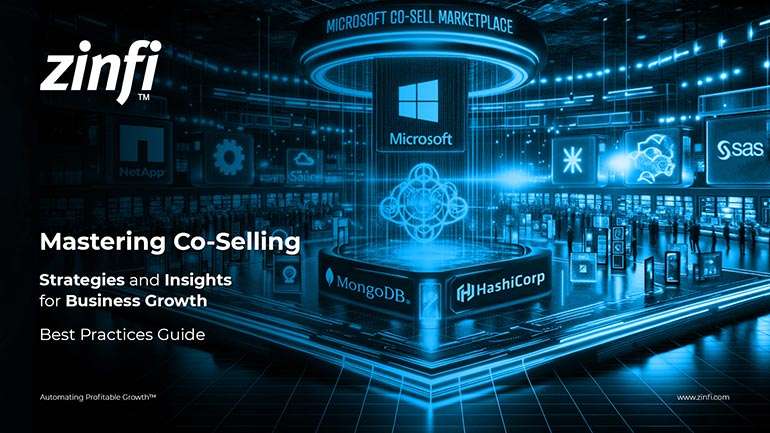Best Practices Articles

5 Questions to Ask When You Set Up Deal Registration Software
Sometimes organizations that are selling through an overdistributed channel or that have an internal direct sales force are required to deploy deal registration software to protect deals or provide exclusive opportunities for specific partners who have already worked to develop those opportunities. However, if deal registration is not handled properly, it can cause significant channel conflict, partner dissatisfaction and even in some cases legal liability related to privacy and financial losses incurred by a partner. Therefore, it is critical for a vendor to think through the details of deal registration thoroughly prior to deploying deal registration software.
In this article, we will explore a few challenges associated with deploying deal registration software, and identify key questions that need to be asked in order to clearly define a successful deployment approach. Before we go further, though, let’s step back for a moment and define the primary purpose of deal registration software and explore how it typically works.
There are two primary scenarios where deal registration software needs to be deployed:
- In the first scenario, either a vendor-led lead or opportunity has been created and is handed over to a channel partner for closure, or a partner-led opportunity requires protection from other partners who might be in a position to poach that opportunity. In both cases, we are going to assume that there is no competition between partners and the vendor’s internal sales team, and that the partner doesn’t have any other potential conflict with the organizational sales force. In this case the primary purpose of the deal registration software would be to protect the deal from another partner.
- In the second scenario, a partner is generating an opportunity and the deal requires protection from a vendor’s internal direct sales organization. This is where things can sometimes get a bit tricky and murky. To avoid this situation, vendors need to define clear channel policies prior to the deployment of any deal registration software. If a vendor doesn’t have a clear-cut policy designed to prevent channel conflict for a specific set of opportunities, and instead leaves it to organizational interpretation, then there could be a major issue down the road.
While there are several other less common scenarios that a vendor may need to think through before deploying deal registration software, let’s focus on these two for now and consider a few questions that need to be answered before the vendor is ready to define a clear deployment approach for deal registration software.
Here are five key questions:
- What types of products might require deal registration and why? While this may sound like a rhetorical question, the key is to make sure when a vendor provides protection for a deal, the rationale behind the protection acknowledges that the closing of the opportunity requires significant investment from the partner side.If the transaction volume is high and the value of individual transactions is relatively low, then it wouldn’t make sense to protect these deals. However, if the transaction value is high regardless of volume, these deals may require protection, assuming the partner needs to invest significant resources to close such opportunities.
- How will partners be selected as a part of the deal protection program? While it is not only noble for a vendor to deploy deal registration software to provide protection to a partner and his/her pipeline, it is also important to make sure only capable partners are rewarded with such protection.At the end of the day the goal is to close as many transactions as possible at the lowest possible cost, without creating any partner satisfaction issues or crossing any ethical boundaries. However, it is also completely logical to deploy deal registration software and define clearly the threshold a partner must reach regarding annual sales volume, technical certification, geographical coverage or other parameters to be eligible for deal protection.
- Will deal registration include named, open or hybrid account management? This is a very important question to answer before any deal registration software can be deployed and configured properly. “Named” accounts are specific accounts that are assigned to a specific partner. “Open” accounts are accounts that are not protected, and all partners can pursue those end-user accounts for business on a vendor’s behalf.Typically any named account is reserved for partners with higher level capabilities and commitment to a vendor’s solution. Therefore, if a vendor decides to proceed with the named account approach for its deal registration software, it is essential that the vendor think through the implications of this decision. Again, in the end the goal is to achieve a higher volume of transactions at the lowest possible cost while also providing maximum partner satisfaction. All three variables need to be addressed and maximized.
- What is the approval mechanism for the review and escalation of issues? State-of-the-art deal registration software like ZINFI’s partner relationship management (PRM) solution can certainly help a vendor automate named, open account or hybrid deal registration processes. However, in order to manage real-life scenarios, certain manual interventions will sometimes be required to ensure compliance.While most of the deal registration workflow can be automated to reduce labor content and improve trackablity and accountability, the decision flow needs to be mapped so that cross-functional team members from field marketing, channel sales management, partner business management, etc. can regularly review both process efficacy and performance output in a systematic and objective manner.
- What are the key measures of success for a deal registration program? Too often a vendor gets pulled into the technical nuts and bolts of a deal registration program or deal registration software. However, before complex workflows are automated with significant resource investment and over a period of time, a vendor must clearly answer this foundational question: What is the measure of success for this deal registration program?A typical measurement of success is higher deal closure at a lower transaction cost, but it may also involve increases in partner loyalty and satisfaction, and healthy competition among partners. In any case, if success metrics are not properly defined, tracked and managed, it can easily lead to an explosion of scope that may confuse and frustrate participants and not yield significant results.
As you can see, there are many intricacies to setting up an effective deal registration program. Yes, the software needs to be configured properly, but the most important requirement of deploying such a program has to be met before configuration. You need to think through at a macro level what products should be protected and how, what partners should be considered as a part of such a program, how open and named accounts should be managed, how approval will be handled and how success will be measured.
Once a vendor has thought through and answered these five questions in a logical fashion, then the organization is ready to deploy the deal registration software and drive the program with clear business benefits and results.
Best Practices Guidebook
 Winning with Partner Advisory Councils: Best Practices for Partner Engagement & Growth
Winning with Partner Advisory Councils: Best Practices for Partner Engagement & GrowthDownload Guide
 The Future of Partner Ecosystems Best Practices
The Future of Partner Ecosystems Best PracticesDownload Guide
 The AI Revolution: How Technology and Talent are Shaping the Future
The AI Revolution: How Technology and Talent are Shaping the FutureDownload Guide
 Top 105 Partner Management Metrics that Matter Best Practices
Top 105 Partner Management Metrics that Matter Best PracticesDownload Guide
 Mastering PRM Integration Best Practices
Mastering PRM Integration Best PracticesDownload Guide
 Building a Sales Partner Portal with Salesforce Best Practices
Building a Sales Partner Portal with Salesforce Best PracticesDownload Guide
 Building and Managing Partner Ecosystems Best Practices
Building and Managing Partner Ecosystems Best PracticesDownload Guide
 Mastering Co-Marketing and Co-Selling Best Practices
Mastering Co-Marketing and Co-Selling Best PracticesDownload Guide
 Transforming Partner Ecosystems Best Practices
Transforming Partner Ecosystems Best PracticesDownload Guide
 Mastering Partner Ecosystems Best Practices
Mastering Partner Ecosystems Best PracticesDownload Guide
 Mastering Partner Onboarding Best Practices
Mastering Partner Onboarding Best PracticesDownload Guide
 Partner Ecosystem Management Best Practices
Partner Ecosystem Management Best PracticesDownload Guide
 B2B Marketing in the Age of Intelligence Best Practices
B2B Marketing in the Age of Intelligence Best PracticesDownload Guide
 Multi-Partner Co-Selling Best Practices
Multi-Partner Co-Selling Best PracticesDownload Guide
 A Guide to Enhance Channel Sales Efficiency
A Guide to Enhance Channel Sales EfficiencyDownload Guide
 Mastering Affiliate Marketing Best Practices
Mastering Affiliate Marketing Best PracticesDownload Guide
 The Ultimate Guide to Channel Partner Management
The Ultimate Guide to Channel Partner ManagementDownload Guide
 Top 10 Trends in 2024 Partner Relationship Management
Top 10 Trends in 2024 Partner Relationship ManagementDownload Guide







